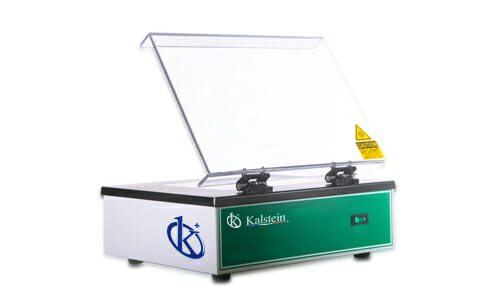The transilluminator is a vital tool in the molecular diagnostic laboratory and other molecular biology disciplines. This device, also known as a light box, illuminates agarose or acrylamide gel samples from below to reveal the presence and positions of stained DNA, RNA or protein fragments.
Ultraviolet (UV) light is the most common light source used by transilluminators, although different light ranges can also be used if samples are stained with specific fluorescent dyes. The transilluminator is key to many assay techniques, such as gel electrophoresis, western blotting and restriction analysis-all essential procedures in genetic research and disease investigation.
The impact of the transilluminator on clinical analysis
Clinical analysis benefits greatly from the incorporation of this device into their protocols. The ability of the transilluminator to accurately visualize DNA, RNA and protein fragments on agarose or acrylamide gels has revolutionized diagnostics and molecular analysis, enabling faster, more accurate and more efficient results. Using this device, laboratory experts can detect molecular markers of disease, identify genetic mutations, and analyze the quality and quantity of DNA and RNA samples.
In addition, the transilluminator has enabled a major breakthrough in disease research, providing scientists with a tool to visualize and analyze the molecular components of cells. With this, the precise identification of genetic abnormalities in various diseases, from cancers to metabolic disorders, became possible.
Advances and future prospects in the use of the transilluminator
The transilluminator has undergone significant improvements since its invention. Blue light transilluminators have been developed, which minimize DNA damage and are less harmful to human eyes compared to traditional UV light transilluminators. We now have digital transilluminators, which allow sophisticated image analysis and archiving of the results.
In addition, scientists are constantly looking for ways to improve current transillumination techniques. Research is underway to design more specific and sensitive transilluminators that can detect biomolecules in lower quantities and at higher resolution. This will enable more accurate analysis and diagnosis and improve the performance of clinical protocols and disease research.
Kalstein Conclusion
Thus, the transilluminator remains an essential tool for modern clinical research and analysis. Its contribution to the world of biomedical sciences is indisputable, and its constant evolution and improvement makes us eagerly anticipate the incredible possibilities that the future of molecular research and diagnostics holds. Undoubtedly, we can expect more and more advances in gel transilluminator technology that will continue to drive the progress of diagnostic medicine and molecular science around the world.
We at Kalstein are a manufacturer of laboratory equipment, we are pleased to invite you to visit our high-end products, with updated design and advanced technology; know our transilluminators HERE, you will find the YR models that are available for your purchase, we also have a new 3D platform that has unlimited versatility, present in more than thirty countries worldwide, publish with us without language restrictions, with shipping plans, be seen, you are more.

